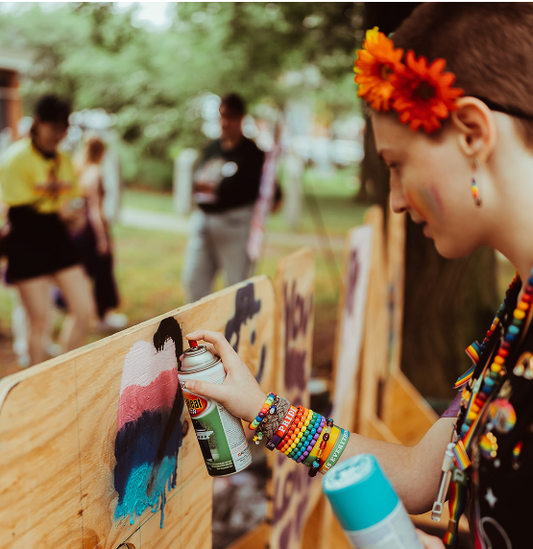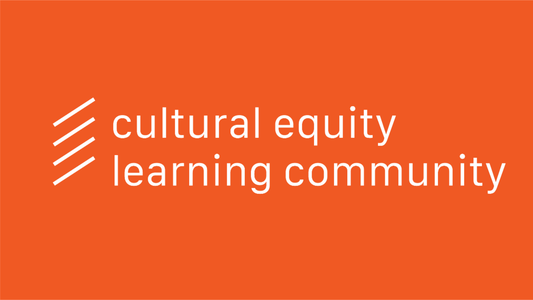Queerlective Youth Arts and Culture Activation Project
Program Title: Empowering Teaching Artists for Creative Activism
- Introduction:
The program organized by Queerlective aims to empower teaching artists through professional development and community opportunities to become catalysts for creative activism. By providing support and fostering a network of skilled teaching artists, this program seeks to create positive change, celebrate diversity, and enrich communities through art.
- Program Objectives:
- Activate Teaching Artists: Engage teaching artists in projects and initiatives that inspire creative activism, encouraging them to use their artistic skills to address social issues and effect positive change.
- Professional Development: Offer comprehensive training and workshops to enhance the teaching artists' pedagogical skills, community engagement, and inclusivity in their artistic practices.
- Community Opportunities: Facilitate connections between teaching artists and community organizations, schools, and events to provide platforms for artistic expression and community impact.
III. Program Components:
- Creative Activism Workshops:
- Introduction to Creative Activism: Understanding the concept of creative activism, exploring its history, and identifying its various forms.
- Art as a Tool for Social Change: Recognizing the potential of art in raising awareness, fostering dialogue, and promoting inclusivity.
- Effective Community Engagement: Learning strategies for building meaningful connections with diverse audiences and community partners.
- Teaching Artist Development:
- Pedagogy for Social Impact: Developing teaching techniques that encourage critical thinking, empathy, and social consciousness in participants.
- Inclusive Practices: Exploring approaches to create inclusive and welcoming learning environments for all individuals, regardless of background or identity.
- Amplifying Voices: Empowering teaching artists to facilitate platforms where marginalized voices are celebrated and heard.
- Collaborative Projects:
- Community Engagement Initiatives: Partnering with local organizations and schools to design and implement community-driven art projects that address specific social issues.
- Collaborative Exhibitions and Events: Co-creating art exhibits and events with other artists and community members to foster cross-cultural connections and dialogue.
- Artist-in-Residence Program:
- Establishing Residency Opportunities: Collaborating with local institutions to develop artist-in-residence programs that allow teaching artists to engage with students and community members.
- Artistic Exploration and Expression: Providing teaching artists with dedicated time and space to develop and present their artistic projects.
- Implementation:
- Outreach and Recruitment:
- Publicize the program through various channels, including social media, community partnerships, and local art organizations.
- Encourage applications from diverse teaching artists who share a commitment to creative activism and community engagement.
- Program Facilitation:
- Schedule and conduct workshops and professional development sessions led by experienced educators and artists.
- Coordinate collaborative projects and community engagements, ensuring effective communication and planning.
- Residency Program:
- Liaise with educational institutions and organizations to establish artist-in-residence opportunities.
- Support teaching artists during their residencies by providing necessary resources and assistance.
- Evaluation and Impact Assessment:
- Data Collection:
- Gather feedback from participating teaching artists through surveys and evaluations after workshops and events.
- Track and document the outcomes of collaborative projects and community engagements.
- Impact Assessment:
- Analyze collected data to assess the program's effectiveness in activating teaching artists and promoting creative activism.
- Identify areas for improvement and expansion based on the program's impact assessment.
- Conclusion:
Queerlective's Empowering Teaching Artists for Creative Activism program aims to create a network of skilled and passionate teaching artists committed to using their art as a tool for social change. By providing professional development and community opportunities, this program seeks to enrich communities, amplify marginalized voices, and foster inclusivity through the transformative power of art and creative activism.
Queerlective News
View all-

Storytelling for Social Change
*Above poster is temporary* Overview The Storytelling for Social Change project is an initiative by Queerlective that aims to address social determinants of health through engaging narratives and artistic expression....
Storytelling for Social Change
*Above poster is temporary* Overview The Storytelling for Social Change project is an initiative by Queerlective that aims to address social determinants of health through engaging narratives and artistic expression....
-

Queerlective's Pride Activities & Art Engagemen...
This year, Queerlective is embarking on a vibrant journey across New Hampshire, bringing art to numerous Pride events with our unique initiative.
2 commentsQueerlective's Pride Activities & Art Engagemen...
This year, Queerlective is embarking on a vibrant journey across New Hampshire, bringing art to numerous Pride events with our unique initiative.
2 comments -

Uniting for Equity: Introducing the Queerlectiv...
Queerlective has spearheaded the formation of a unique cohort, embarking on the Cultural Equity Learning Community (CELC) program by Arts Connect International.
Uniting for Equity: Introducing the Queerlectiv...
Queerlective has spearheaded the formation of a unique cohort, embarking on the Cultural Equity Learning Community (CELC) program by Arts Connect International.



